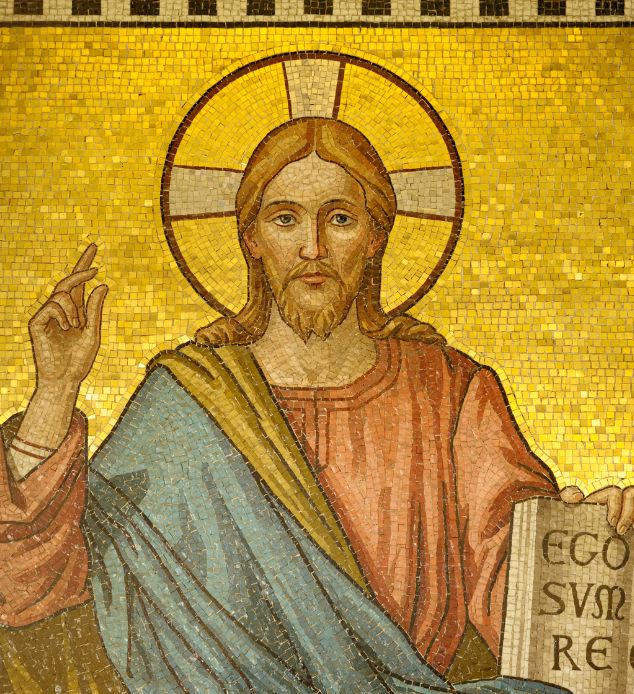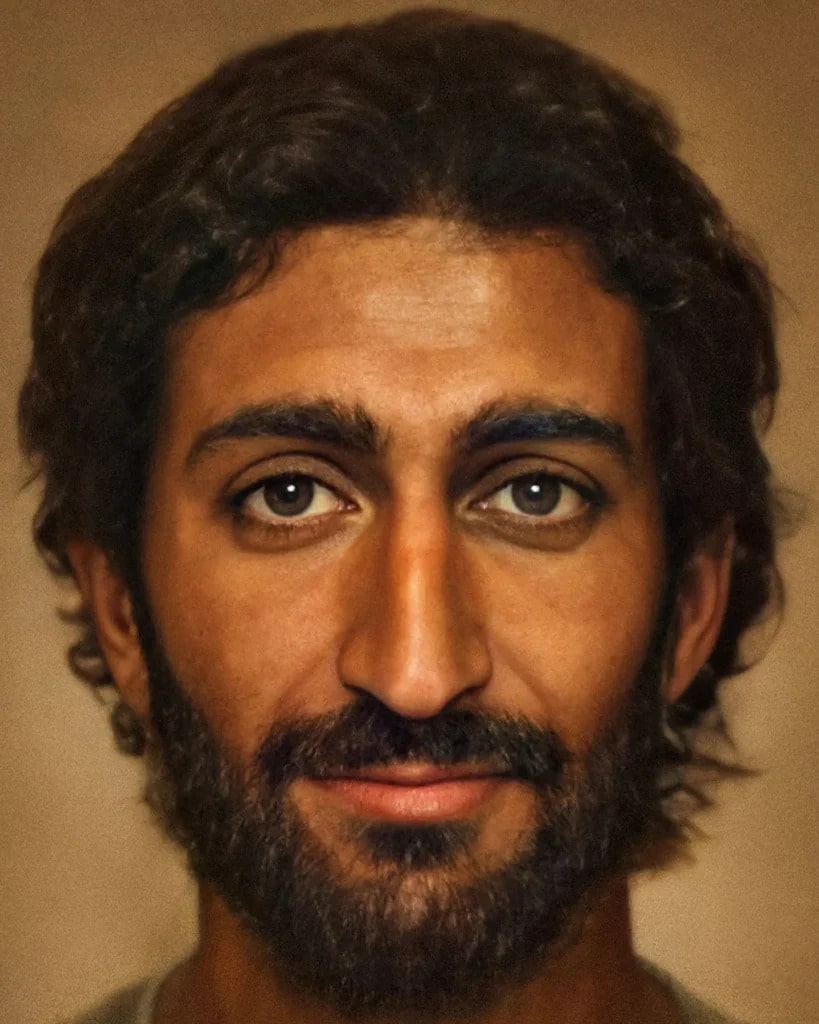Have you ever wondered what Jesus Christ really looked like? The iconic image of a white, blue-eyed Jesus has been ingrained in our minds for centuries. However, scholars suggest that this portrayal may not accurately represent the historical Jesus.

Bas Uterwijk, a talented Dutch photographer and digital artist, embarked on a remarkable mission to uncover the true face of Jesus. Drawing on cutting-edge technology and Artbreeder’s machine-learning techniques, Bas sought to create an image that reflected the historical context of Jesus’ birthplace.
The result? A captivating and unexpected image that challenges our conventional perception of Jesus’ appearance. Bas explains, “The AI software I used combines photographic portraits and painted renditions of human faces to create a synthesized image based on the user’s preferences.”
With meticulous attention to historical accuracy, Bas adjusted the hair and beard lengths and styles to align with the norms of Jesus’ time and region. Incorporating elements from Byzantine and Renaissance traditions, he aimed to create a Middle-Eastern visage that resonates with authenticity.

It’s essential to note that Bas’s portrayal of Jesus is more of an aesthetic impression than a scientifically precise reconstruction. Born in Bethlehem to a Jewish family, Jesus grew up in Nazareth. According to historical documents, people in Judea and Egypt during that time had olive-toned complexions, ebony-black hair, and brown eyes.
Joan Taylor, an expert on Christian origins, explains that the iconic features commonly associated with Jesus, such as flowing hair, robes, and beards, emerged centuries after his time. Jesus’ looks were far more aligned with his geographical and historical surroundings. His complexion would have been darker, his hair shorter and black, and he would have sported a beard and sandals.

Taylor emphasizes that Jesus lived an itinerant existence, relying on the generosity of others and sharing in the struggles of the less fortunate. Historical records describe him as humble, even resembling a beggar in his unkempt appearance. Jesus himself acknowledged, “Foxes have homes, birds have nests, but the Son of Man has somewhere to lay his head.”
Jesus’ influence expanded beyond his immediate surroundings, reaching people across Europe and Africa. Richard Neave, a forensic facial reconstruction specialist, conducted a fascinating project to imagine the likeness of a typical Judean man from the first century, akin to Jesus. Neave’s restoration depicts a stocky man with dusky skin, short hair, and an olive complexion.
These efforts to rediscover the true face of Jesus prompt us to reflect on our preconceived notions and engage in meaningful discussions about the historical nuances of this beloved figure. Share this post with your friends and family, and let’s delve into the captivating journey of uncovering the authentic Jesus, inspiring insightful conversations along the way.



